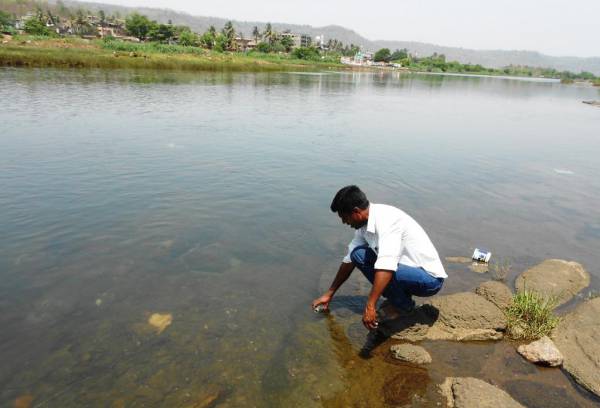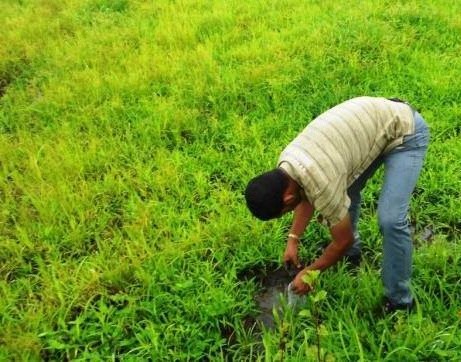Environmental Monitoring Methods
Environmental Monitoring Method or Procedure is to understand the level of harmful pollutants present in the atmosphere and its effects on the environment, human life, animals and trees.
Objectives of Environmental Monitoring
Data obtained from Environmental monitoring procedure can be used to draw trends for future complications. Also, it allows to identify natural calamities before time and precautionary measures can be taken to soften the impact.
Read more about Purpose or Objectives of Environmental Monitoring
Types of Environmental Monitoring
Types of Environmental Monitoring:
- Air Quality Monitoring
- Water Sampling and Analysis
- Noise level Testing
- Soil Quality Testing
- Microbial Monitoring
Type of environmental monitoring purely depends upon the objective or purpose. Environmental monitoring methods change on a number of locations, duration of the survey, time of the survey.
Environmental monitoring methods are classified into three types: Planned emission, fugitive emission and accidental emissions.
Source Emission Monitoring
Source emission monitoring is carried out to determine the emission rate for a particular source and its effects on the environment. Environmental Monitoring Methods vary based on the source of emission.
Stationary Source or Stack Monitoring
There are two important points in stack monitoring. First, the sample taken should be an accurate representation of pollutant emission at a particular point and a particular time. Also, the frequency and duration of sampling should be kept at a particular interval so that combined reports or results can become complete source emission.
In monitoring process of a circular stack sampling points at equal distance ensures the emission variation are counted. In rectangular stack monitoring sampling points should be located at equal distance from each other. Generally, 8-12 sampling points are enough to overcome any deficiencies in the location of the stack.
Know more about Stack Emission Monitoring
Mobile Source Monitoring
Mobile source monitoring means monitoring emission released from Vehicles and air crafts. While monitoring mobile sources state of engine (idling, accelerating, braking or cruising etc.) is also should be taken into consideration.
Waste Water Monitoring Methods or Procedures

The wastewater sampling procedure is also like stack monitoring as liquids are also irregular like gases. In wastewater sampling samples are taken from different cross-section points for a sample to be representative of the source. Sampling from vertical pipes is less liable to affected by the deposition of solids as compared to horizontal pipes.
Whenever there is a variation of effluents with time then grab samples or auto samplers are used to get a more representative sample. Grab sampling is one of the traditional environmental monitoring methods.
Solid Waste Monitoring
Solid waste is more inhomogeneous than gases and liquids. Solid waste is generated after wastewater treatment, remained residue from the municipal furnace, wastes from coal-fired from power plants. In Solid waste sampling composite sampling method is used to get a more representative sample.
Ambient Environmental Monitoring
Environmental monitoring can be carried out for different reasons, but the most important reason is to get a more representative sample of a particular place and time.
Air pollution varies from place to place, time to time and pollutant to pollutant, therefore sampling methods, duration, time, frequency vary depending upon factors.
Site selection in environmental monitoring is very important as it directly affects the samples and results.
Read more about Benefits of Environmental Monitoring
Environmental Monitoring Methods or Procedure
There are many types of sampling methods are available for Air, Water and Soil. We will see only those which are used widely.

Filtration
In this method based on the type of pollutants needs to monitored filtration method is selected.
Impingers
Very high-velocity air is passed through wet or dry impingers based on collecting surface. If collecting surface is dry, then dry impingers are used and when collecting surface is wet then wet impingers are used.
Sedimentation
This is a very simple environmental monitoring method for air sampling. In this process, an open container is placed in an open outdoor area which is free from overhead obstructions. This method is widely used to determine the fallout of dust fall in a particular area.
This method is very simple, does not require electrical power or moving parts. The only disadvantage is lack of precision and inability to distinguish peak dust fall as the entire sampling period may go till 30 days.
Electrostatic Samples
This method is very efficient to collect small samples, On entering into sampler particles pickup charge and get deposited on electrodes.
Adsorption
The adsorption of gases is a surface phenomenon. Gas molecules are deposited on the Solid Surface. Materials like activated carbon, silica gel, alumina etc. are used in the adsorption process.
Condensation
In this method sample collected is cooled down to the below boiling point of the analyte and sample becomes concentrated. Generally, there are two traps one is at zero degrees as water vapour becomes water and same can be removed from sample as it is in a liquid state and then sample again cooled down till -1960 C.
Grab Sampling – Perfect Pollucon Services

In grab sampling, high volume samplers are used with filters in air quality monitoring process. Filters are consist of glass fibres and have an efficiency of 99% particles with 0.8 µ diameter. Sampling is desirable where people work. Sample collected by high volume samplers are further analysed in laboratory chemically, by microscopes, gravimetric and extraction techniques
In Water, sampling sample is collected from different locations, different depths and sent to laboratories for analysis.
Do you Know about Particulate matter Monitoring?
Composite Sampling
In composite sampling, the sample is collected from different locations, different time to make the sample more representative of the source. This type of sampling method gives an average condition of the presence of pollutants.
Environmental Monitoring Tools
The important part of any environmental monitoring activity is the kind of equipment or tools used in the process. There are many types of instruments used in environmental monitoring at different stages.
Few tools or equipment are mentioned below used in environmental monitoring:
- Sampling: Automated Samplers, high volume samplers,
- Monitoring: Air Monitoring Sensors, Data Loggers, Noise Level Meter, water testing sensors, Indoor Air Quality Meters, flue gas monitors, etc
- Data loggers: Real time data loggers to receive and store real time environmental data
- Laboratory tools: Temperature chambers, various analysers, balances, evaporators, particle counters, pH meters, refractometers etc.
What are the Components of Environmental Monitoring?
Below are the components of Environmental Monitoring:
- Airborne Nonviable Particulate monitoring (PM2.5 & PM10)
- Viable Contaminant monitoring of surface
- Temperature and Humidity monitoring
- Pressure differential Monitoring
Share this Article with your Friends and Family !
Do you know new environmental monitoring methods which are not listed here? Let us know by commenting below.
Environmental monitoring system is a tool or set of techniques to to assess and monitor the quality of environment and minimize the impact of human activities on environment. In Environmental monitoring activity results are gathered, analyzed and then published.
Environmental monitoring and control describes the processes and activities takes part in measuring the quality of environment, understanding the impact of human activities and taking measures to control or minimize the impact of those activities on Environment.
The four types of environmental monitoring are air quality monitoring, water quality monitoring, soil quality monitoring, and biodiversity monitoring. They involve assessing pollutant levels in the air, evaluating the health of water bodies, examining soil properties, and tracking species diversity and ecosystem health, respectively.
Environmental monitoring is crucial in understanding the health and condition of our natural surroundings, providing essential data for informed decision-making and policy development to protect ecosystems, mitigate pollution, and ensure sustainable resource management. It helps identify environmental risks, assess the effectiveness of conservation efforts, and enables proactive measures to safeguard the environment and human well-being.
An example of environmental monitoring is the regular assessment of water quality in a river to track pollutant levels, identify potential contamination sources, and ensure the safety of aquatic ecosystems and drinking water sources.
Another example is the monitoring of air pollution in an urban area using air quality sensors to measure pollutant concentrations and inform public health initiatives and pollution control strategies.
The role of an environmental monitor is pivotal in ensuring the compliance, conservation, and sustainable management of natural resources. Environmental monitors assess the impact of human activities on ecosystems, air, water, and soil quality. They collect data, conduct field surveys, and analyze samples to detect pollutants, assess biodiversity, and track changes over time.
By monitoring environmental conditions, these professionals contribute to the identification of potential risks, help develop mitigation strategies, and ensure that industries and communities adhere to environmental regulations. Ultimately, environmental monitors play a vital role in safeguarding the planet’s health and promoting responsible practices for a more sustainable future.
Read here Environmental Monitoring
